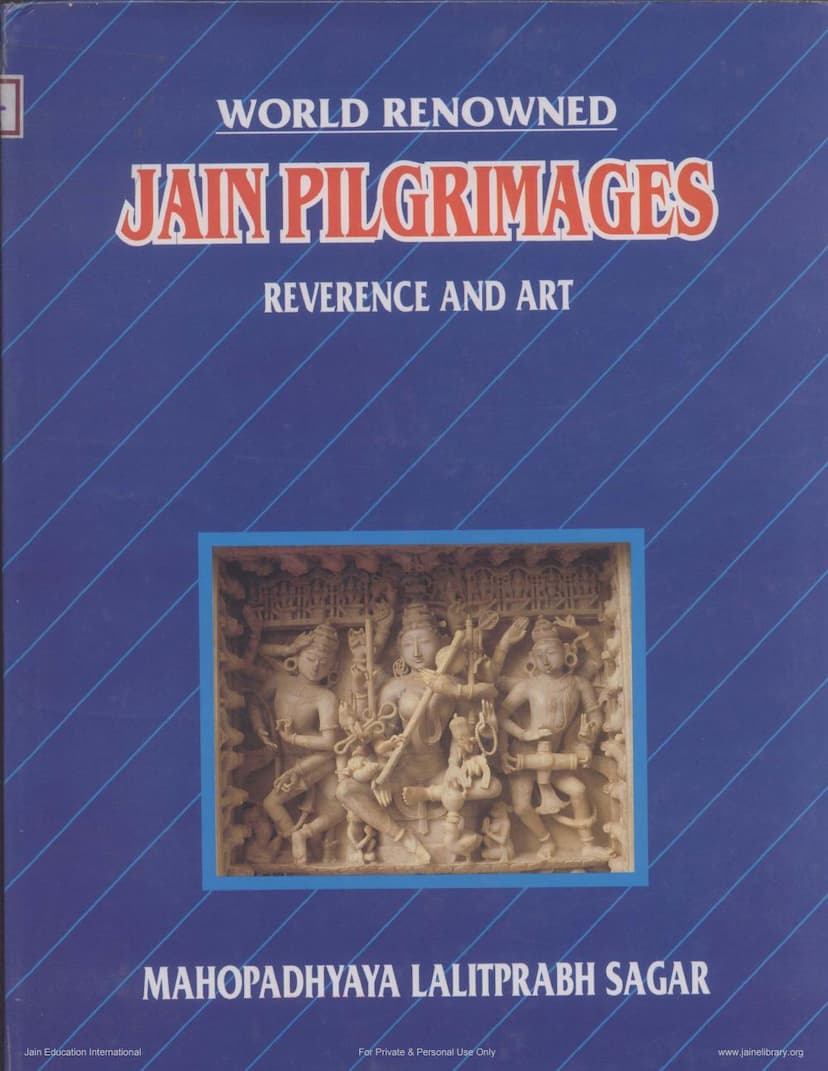Jain Pilgrimage
Added to library: September 2, 2025

Summary
This book, "World Renowned Jain Pilgrimages: Reverence and Art" by Mahopadhyaya Lalitprabh Sagar, published by Prakrit Bharti Academy and Jit-Yasha Foundation in 2000, is a comprehensive guide to significant Jain pilgrimage sites in India, with a particular focus on their artistic and architectural marvels.
Key Themes and Content:
-
Devotion and Art: The book highlights India as a "treasury of devotion and art," with Jainism significantly contributing to both. It emphasizes that Jainism's message is intrinsically linked with India's national character, emphasizing principles like ahimsa (non-violence), truth, and detachment.
-
Significance of Jain Pilgrimages: The text posits that pilgrimages are vital for sustaining religion, serving as "windows through which we can peep into the spiritualism of the past." They are described as places of immense spiritual power and consciousness.
-
Artistic and Architectural Focus: While acknowledging the devotional importance of these sites, the primary aim of the book is to showcase the "sculptural aspect" and "art of Jain centers of pilgrimage." It uses photography to display the "intricate and fine carvings made by stone artisans."
-
Selection of Pilgrimages: The book features sixteen "popularly established" pilgrimages that are also "internationally discussed as examples of art and sculpture." Some are noted for their devotion (like Shankheshwar and Nakoda), while others are celebrated for their artistic excellence (like Delwara-Abu, Ranakpur, and Jaisalmer).
-
Specific Pilgrimage Highlights (as detailed in the provided pages):
- Ranakpur: Described as a "unique example of Indian architecture" and the "nucleus of Indian art," it is renowned for its 1444 intricately carved marble columns, elaborate ceilings, and the Chaturmukh Jinprasad (four-faced temple). The temple's founder, Mahamantri Dharnashah, and architect, Depa, are mentioned.
- Mahavirji (Chandanpur): A miraculous pilgrimage of the Digambar sect, known for its sacred idol found through excavation. It is praised for its auspiciousness rather than extensive art.
- Nakoda: Famous for the worship of Lord Parshwanath and the protective deity Shree Bhairavji Maharaj, believed to fulfill wishes. It's a significant center of devotion with a rich history of renovations and renovations.
- Jaisalmer (Laudravpur): Celebrated for its specialized art, evident in temples and mansions, and for housing ancient manuscripts and Jain scriptures. The temples are noted for fine engraving on pillars, arches, and gateways.
- Osian: Known for its specialized architectural splendor, particularly its sculptures on hard stones. It's considered a center of early medieval art and architecture, with temples dating back to the 8th and 11th centuries.
- Delwara-Abu: Considered to have unparalleled sculptural art, made of white marble. It's a cluster of five temples, with Vimalvasahi and Loonwasahi temples being particularly renowned for their intricate carvings, domes, and artistic representations.
- Girnar: A sacred pilgrimage site for both Jains and Hindus, connected to the story of Nemi-Rajul. It's a mountain range with numerous temples, showcasing the sculptural art of Gujarat.
- Shankheshwar: Considered the most miraculous and universally revered pilgrimage, known for fulfilling devotees' wishes. It's called the "lord of the conchshells" and has a rich history of restoration.
- Taaranga: Located in Gujarat, it represents a coordination of devotion and art, with beautiful natural surroundings and detailed carvings, especially of dancing divine belles.
- Mehsana: A 20th-century pilgrimage featuring a large idol of Lord Seemandhar Swami, who resides in the Mahavideha region, a unique aspect for Jain temples.
- Palitana: Described as the "topmost pilgrimage of Jainism" and the "city of temples," with 8613 temples and countless idols. It is considered a highly meritorious pilgrimage for both movable and immovable aspects, with a strong connection to Lord Rishabhdev.
- Rajgriha: Historically significant as a place of activity for Lord Mahavir and Lord Buddha, it's a site of spiritual practices and important events in Jain and Buddhist history. It is now largely ruins but remains an important place of worship.
- Pavapuri: The holy land where Lord Mahavir attained Nirvana and delivered his first sermon. The famous Jal-Mandir (Water Temple) is a key attraction, believed to cleanse sins.
- Sammet Shikhar: Considered one of the most prominent Jain pilgrimages, where twenty Tirthankars attained Nirvana. It's known for its sacred atmosphere, sandalwood forests, and the prominent protecting deity Bhomiaji Maharaj.
- Hastinapur: The ancient capital city of India, connected to both the Mahabharata and Jainism. It's significant as the birthplace and place of enlightenment for four Tirthankars and the site where Lord Rishabhdev concluded his year-long penance.
- Shravanbelgola: Famous for the colossal 57-foot monolithic statue of Lord Bahubali (Gomateshwar), carved from a mountain. The Mahamastakabhishek ceremony, held every twelve years, is a major event.
-
Contributors: The book acknowledges the contributions of Mahopadhyaya Lalitprabh Sagar (author), Mahendra Bhansali (photography), Ganivar Shri Mahimaprabh Sagar Ji (guidance), and many others involved in writing, translation, composing, and printing.
In essence, "World Renowned Jain Pilgrimages: Reverence and Art" serves as both a devotional guide and an art historical document, showcasing the profound spiritual heritage and exquisite artistic achievements of the Jain tradition in India.